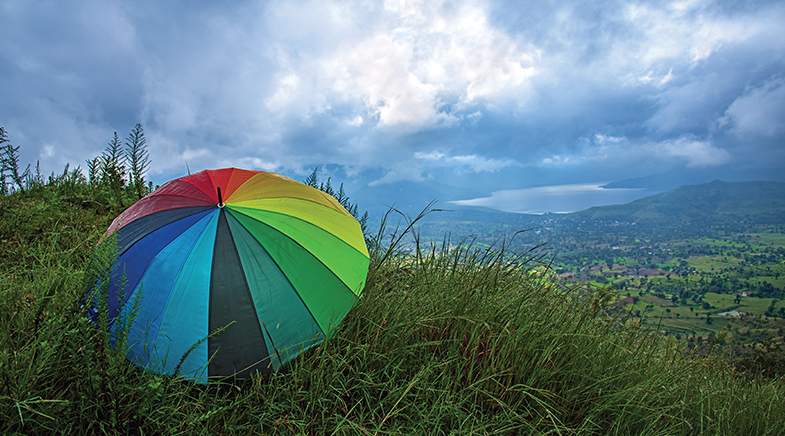The Amazonian 'crying tree'
-
- from Shaastra :: vol 03 issue 03 :: Apr 2024

How a tree full of peeing cicadas led to an unexpected discovery.
Cicadas are known for making loud sounds and emerging in huge numbers but researchers have taken a keen interest in their bizarre peeing behaviour.
According to the study (bit.ly/cicadas-pee) cicadas shoot jets of urine, which is unusual for such small animals. It was previously thought that only animals weighing over three kilograms could emit jets of pee. Small insects like cicadas are expected to relieve themselves in drops. But research by Elio Challita and M. Saad Bhamla of the Georgia Institute of Technology shows otherwise.
They have demonstrated that cicadas, weighing just two grams, can send jets of fluid through their minuscule openings, overcoming fluid forces like surface tension and viscosity. The insights into fluid mechanics that this provides could be used for creating energy-efficient jets. "I always think about how challenging it would be to design a tiny robot or microfluidic pump capable of producing energetic jets. So, to me, cicadas are a truly remarkable example," says Bhamla.
Additionally, the duo has come up with a unifying model of how animals, from tiny cicadas to gigantic elephants, excrete waste. "We have found some interesting fluid mechanics, structural biology and mechanobiology puzzles," says Bhamla.
Cicadas use fluid jets to expel large volumes quickly, helping them extract more nutrients from plant sap.
The researchers made the discovery when they had gone to the Amazon rainforest to study bugs. During a lunch break on their boat trip back, the research group was exploring the jungle along the river when they stumbled upon a tree where hundreds of cicadas were urinating – simultaneously. Local people referred to it as 'the crying tree'. The researchers recorded cicadas in action for analysis.
Cicadas excrete a lot of water because they live on plant fluids such as sap, which is rich in water. Fluid mechanics shows that cicadas use fluid jets to expel large volumes quickly, helping them extract more nutrients from plant sap efficiently. This adaptation helps cicadas save energy and cope with processing large amounts of food low in nutrients.
"These findings not only enhance our understanding of biological functions but also set the stage for integrating the core principles governing crucial life processes," says Suman Chakraborty, Professor at the Indian Institute of Technology, Kharagpur, who has a research interest in mechanobiology but was not involved in the study.
See also:
Have a
story idea?
Tell us.
Do you have a recent research paper or an idea for a science/technology-themed article that you'd like to tell us about?
GET IN TOUCH














